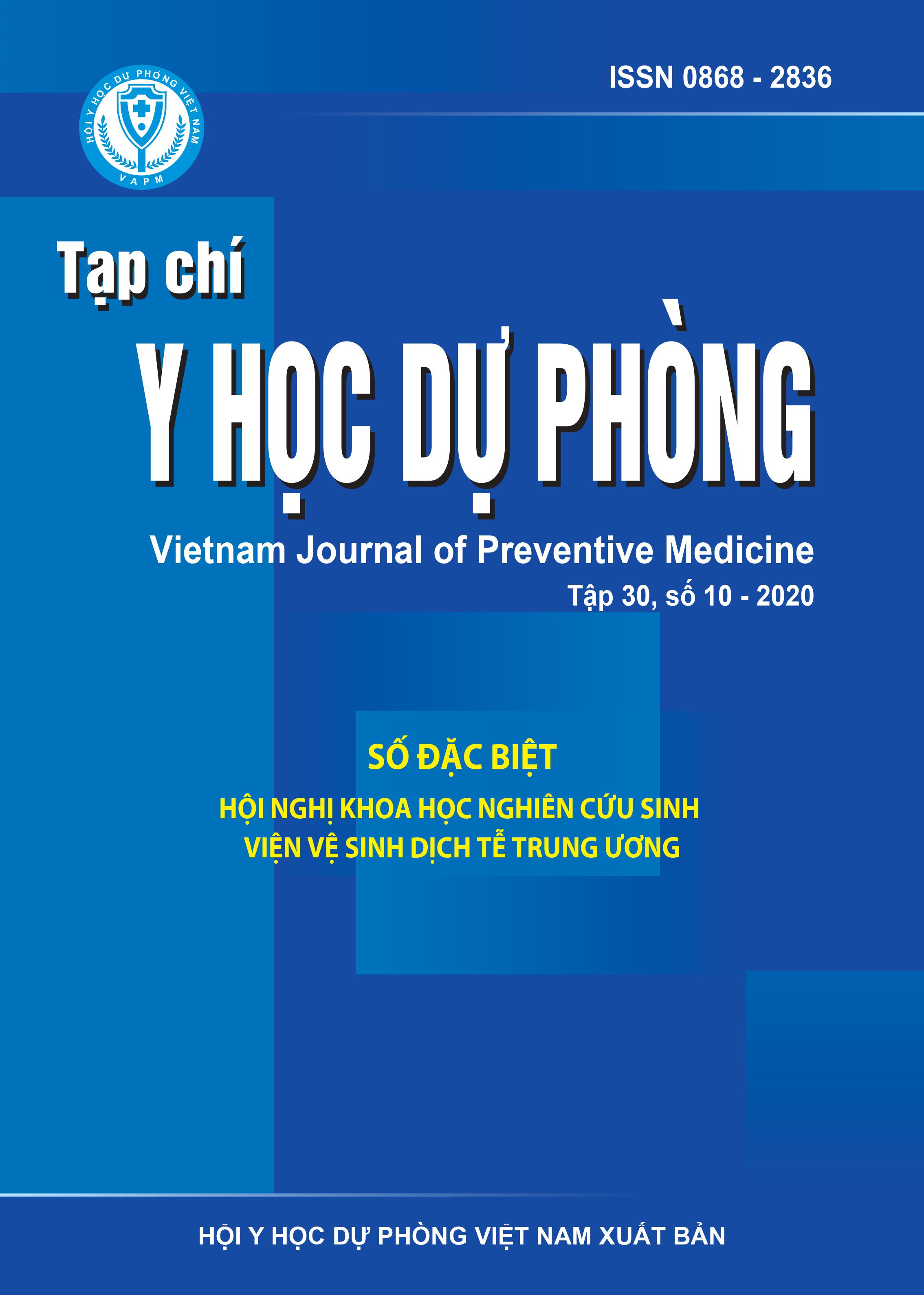Situation of asymptomatic malaria parasitemia by RT-qPCR in Tuy Duc and Cu Jut districts, Dak Nong province
DOI:
https://doi.org/10.51403/0868-2836/2020/104Keywords:
Asymptomatic malaria carrier, Plasmodium falciparum, Plasmodium vivaxAbstract
Malaria prevalence has been declining in malaria endemic zones in Vietnam, but hidden reservoir of asymptomatic parasitemia as technical challenge in elimination roadmap. A community based cross-sectional study was conducted in 2018 - 2020 aimed to describes the situation of asymptomatic carriers by onestep reverse transcription-quantitative PCR (RT-qPCR) technique in Dak Nong province. Total of surveyed 2,809 subjects in Tuy Duc district, among them, 4.6% were confrmed to be asymptomatic malaria parasite carriers. According to the high, moderate, and low endemic zones in the mid-wet and middry season surveyed point have 12.8% vs. 12.6%; 3.6% vs. 3.6%, and 1.5% vs. 1.8%, respectively, non-signifcantly changed in two
seasons, but signifcantly changed between different endemic zone. Total of surveyed 2,940 subjects in Cu Jut district, 2.3% were confrmed to be asymptomatic malaria parasite carriers. According to the high, moderate, and low endemic communes n the mid-wet and middry season surveyed point have 1.3% vs. 2.4%; 1.1% vs. 2.7%, and 3.6% vs. 2.1%, respectively, signifcantly changed in two seasons, but non-signifcantly changed between different endemic zones. The dominant Plasmodium species in both districts were Plasmodium falciparum 100%. Along with symptomatic malaria, asymptomatic carriers will be plus more burden of disease in the study sites. Therefore, on the way for malaria elimination back on the agenda by 2030, asymptomatic malaria needs to concern.
Downloads
Downloads
Published
How to Cite
Issue
Section
License
Publication License No 150/GP-BTTTT signed on May 8, 2014;
Electronic Publication License No 322/GP-BTTTT signed on June 15, 2016.


